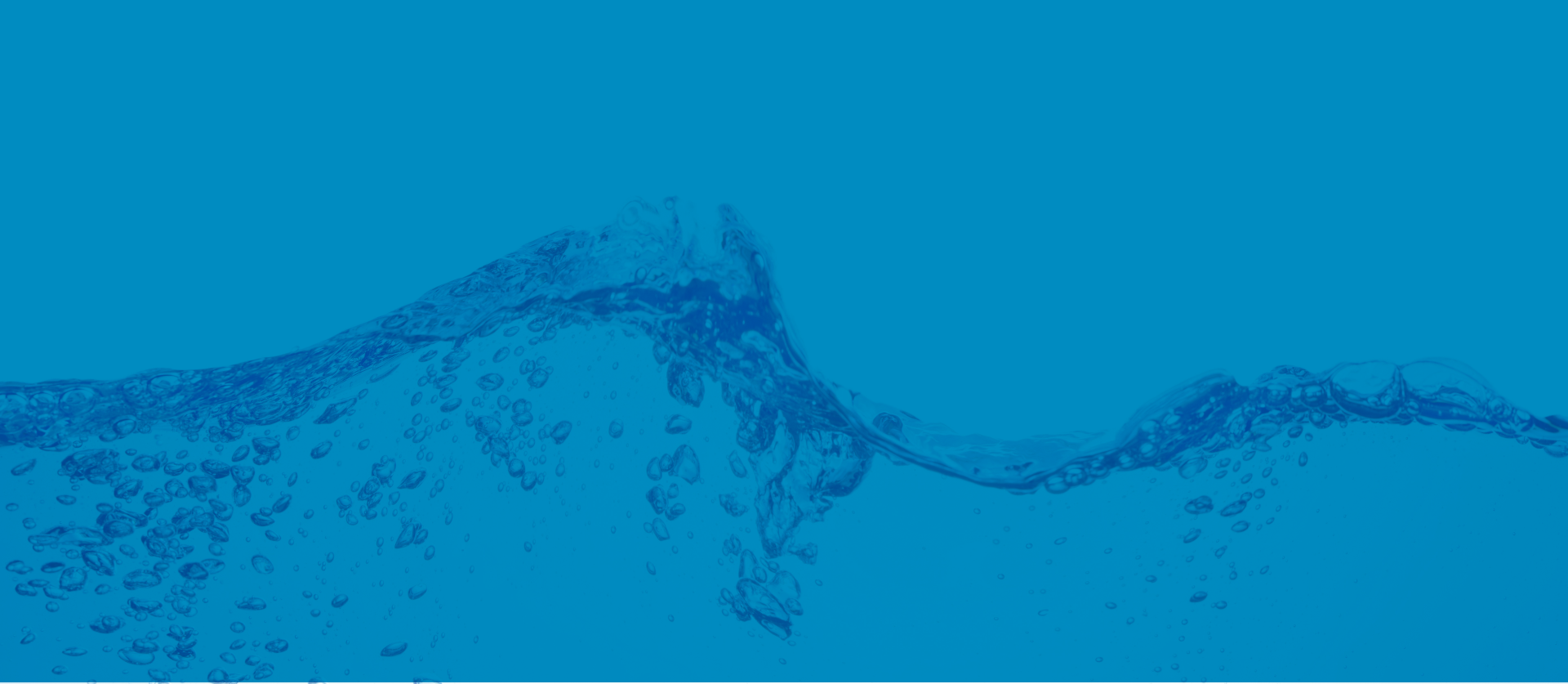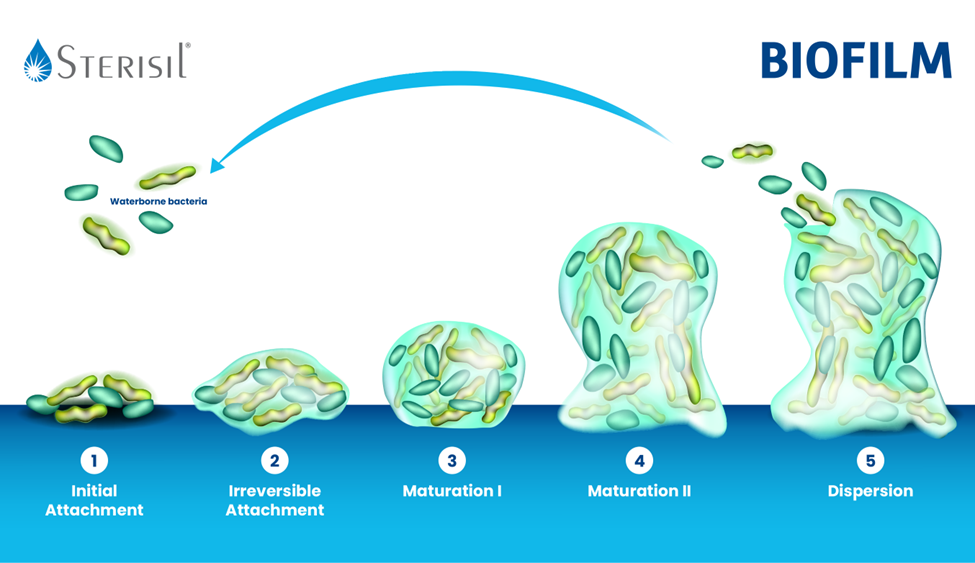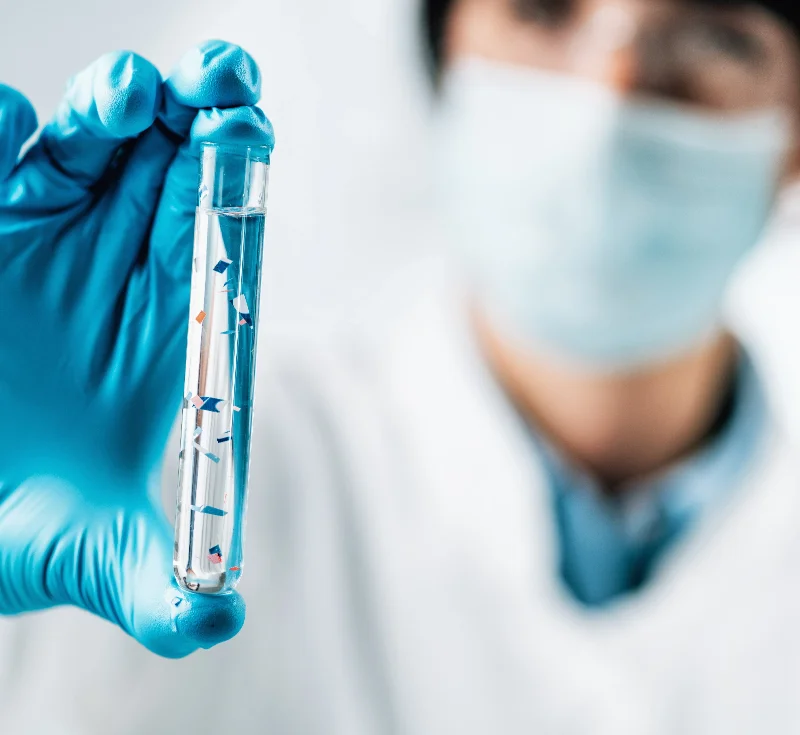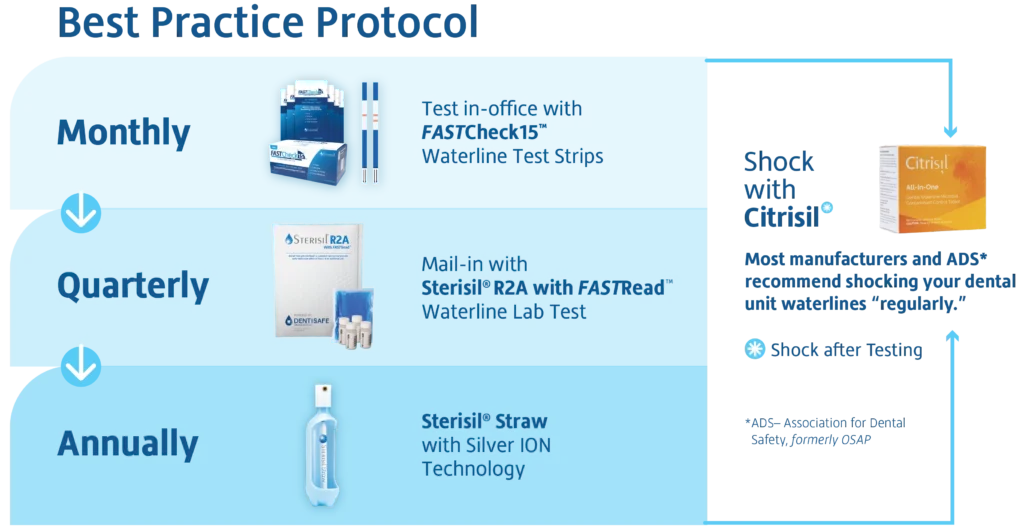Your cart is currently empty!

The Risks of Dental Unit Waterline Biofilm Going Untreated

You wouldn’t brush your teeth with toilet water—but shockingly, some dental professionals may be unknowingly using water that’s less clean than what’s in the toilet bowl. That’s the unsettling reality Michelle Strange, RDH, discovered when she began testing dental unit waterlines (DUWLs) in 2019. Despite 25 years in dentistry, it was only then she realized how dangerously overlooked the risks of dental waterline biofilm can be.
What Is Biofilm, and Why Should You Care?
Biofilm is a slimy, sticky layer of bacteria and other microorganisms that naturally form on wet surfaces—including your dental unit waterlines. While biofilm in the mouth is well-known (it’s why we brush, floss, and scale teeth), what’s less acknowledged is that the same kind of bacterial film develops inside the waterlines that deliver water during cleanings and procedures.
As Strange puts it:
It’s not bacteria specifically, it’s biofilm. It’s the pathogens in that biofilm that create the disease.
It’s not bacteria specifically, it’s biofilm. It’s the pathogens in that biofilm that create the disease.

You Can’t Fix What You Can’t See
One reason the risks of dental unit waterline biofilm often go untreated is because it’s invisible. Strange shares that most clinicians never actually see the water they spray into a patient’s mouth. But during her early testing days, she took a new approach:
“I started testing the toilet water of the offices I was in and comparing it to the waterlines. I passed every single time for the toilet water—and not the waterlines.
That eye-opening comparison helped her realize just how easy it is to overlook sterilization and infection control strategies when the danger isn’t visible.
Testing: The Only Way to Know for Sure
Many dental professionals think dropping a tablet in the water is enough. Strange admits she thought the same—until she started testing.
I’ve always been doing something for my waterlines… but I didn’t realize I needed to make sure it was working.
Just like spore testing confirms an autoclave is functioning properly, waterline testing is the only way to confirm that your treatment and maintenance efforts are actually effective.
Strange emphasizes the importance of:
- Routine testing (monthly with an in-office test like FASTCheck15™, quarterly with a mail-in R2A lab test like Sterisil® R2A with FASTRead™)
- Shocking waterlines to eliminate biofilm buildup with products like Citrisil Shock
- Daily maintenance using treatment agents like the silver ion technology in Sterisil® Straws
- Recording results to track trends and stay compliant

What If You Fail a Test?
It can be scary to face a failed test result—but burying your head in the sand only makes things worse. According to Strange:
People worry that they’re going to fail, so they don’t test. But if you work with someone like Solmetex or Sterisil, you have people who can handhold you to a pass.
She also points out that many initial fails can be chalked up to human error—such as improper shocking technique or not following the instructions for use (IFUs). Following a protocol like Sterisil’s SAFEWATER Solution ensures you’re checking all the boxes while keeping testing simple. And if you still need a little support, our certified Water Specialists are more than willing to hop on the phone and support you into safe water. Whether you need just one phone call or an entire water consultation, we’re here for you.
Why IFUs and SOPs Matter More Than You Think
Speaking of IFUs, Strange confesses that even with her two decades of experience, she’s still “humbled weekly” by underestimating the importance of reading product instructions.
Even when you think you know what you’re doing, you need to pull out those IFUs.
Properly following IFUs ensures that waterline products are used as intended—preventing costly or dangerous mistakes. To take it one step further, Strange recommends creating Standard Operating Procedures (SOPs) so any team member can confidently complete testing or shocking, even in someone’s absence.
This is particularly timely as new regulations, such as those recently introduced in Georgia, are beginning to require SOPs as part of dental waterline compliance protocols.

Why You Can’t Afford to Ignore Biofilm in Waterlines
Outbreaks happen. The 2015–2016 pediatric dental outbreaks were traced back to contaminated DUWLs.
Patients expect safety. Cleanings should never introduce new pathogens.
Regulations are tightening. More states are adopting rules requiring documentation, testing, and SOPs.
Your own health is at risk. Aerosolized bacteria from DUWLs can impact clinicians’ respiratory health.
Takeaway: It’s Time to Prioritize Waterline Testing
The risks of dental unit waterline biofilm are a real and present threat—but they’re also manageable. With the right products, procedures, and partners, your practice can ensure safe water for every patient, every time. As Michelle Strange says, “This is about patient safety… and our safety too.”
Biofilm in DUWLs is a layer of microorganisms that forms on the interior surfaces of waterlines, potentially harboring dangerous pathogens if not treated and maintained regularly.
Testing is the only way to verify that your waterline disinfection methods are working. Like spore testing autoclaves, waterline testing ensures equipment safety and infection control.
Best practices suggest monthly testing with an in-office test, and quarterly testing with a mail-in lab test. However, specific regulations may vary by state.
Failing a test isn’t the end—it’s a starting point. First, shock your waterlines. Next, re-test those lines with the same type of test you failed with (R2A, in-office strip test, paddle test, etc.). If you fail again, call 1-800-216-5505 and a Water Specialist will support your way to a pass!
Ideally, yes—but it’s critical to document protocols as standard operating procedures (SOPs) and tailor them to your equipment’s IFUs to ensure consistency and compliance. Also note that each operatory’s test could have a different result, so it is crucial for patient and clinician health to regularly test them all.
Not yet, but more states are adopting guidelines, and regulatory momentum is building. Georgia, for example, recently enacted new rules that include SOPs for waterline maintenance. Washington and California also have their own set of regulations.
Share this post:

Related Posts





